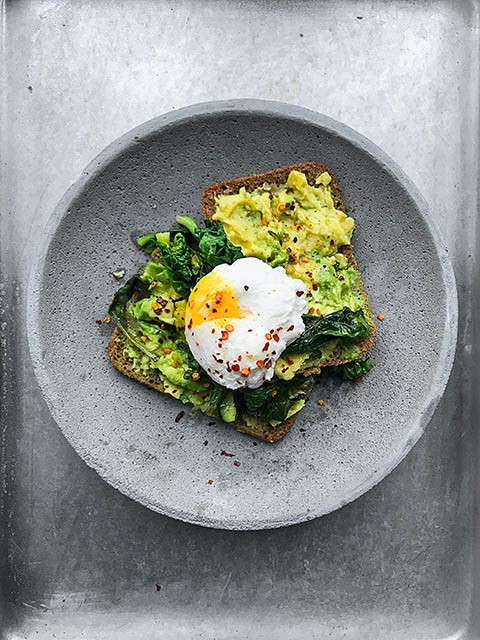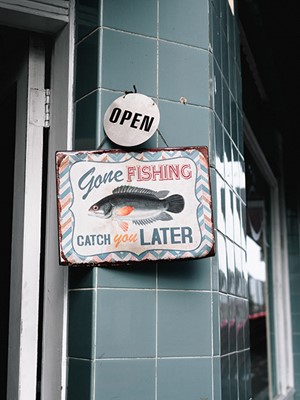Eat like a local in Copenhagen
Danish cuisine is an exciting and delicious melting pot of different tastes and cultures. The Danish immigration policy in the 1960s and 70s allowed many immigrants from all over the world to settle in the country. Many of them came from Pakistan and the Middle East and shaped the Danish food culture to what it is today.

Street food has become increasingly popular in Copenhagen as well over the years. So get ready to try delicious traditional fish dishes but also leave some room for the Copenhageners’ favourite fast foods like hot dogs, pizza and burgers. We will show you some of the best must-try dishes to taste when visiting the capital of Denmark.
Smørrebrød
Originally the lunch of Danish farmers, Smørrebrød has become an essential part of the Hygge lifestyle over the years. The traditional open-faced sandwich is even served in high-end restaurants. You’ll find this simple delicacy in almost every restaurant in Copenhagen, as it has become one of Denmark’s most famous foods.
The traditional variations consists of a crusty and buttered slice of rye bread topped with fish or meat, veggies, aromatic herbs and sauce or cooked eggs or even raw egg yolks. Despite a lot of variations consisting of meat, poultry and fish, you will also find plenty of vegetarian and more contemporary versions in Copenhagen to try.
Wienerbrød
Apart from its savoury cuisine, Denmark is also synonymous with Wienerbrød, sweet Danish pastries made from laminated yeast dough. The pastries’ texture will remind you of a flaky butter croissant, since it is made from 27 layers of buttered layers of dough. The inside is filled with some delicious creamed butter and sugar or marzipan.
The Wienerbrød’s history goes way back to the 19th century, when Danish bakery workers went on strike. The bakeries hired workers from abroad instead, among them several Austrian bakers, who introduced the new pastry recipes. Hence they’re known as Viennese bread. Nowadays, they are usually eaten as a little pick me up in the afternoon paired with a warm cup of coffee or tea.

Fiskefrikadeller
Fiskefrikadeller, or fish cake, is another beloved favourite dish of the Danes. The pendants to regular meat based frikadeller are usually made from white fish, onion, herbs like parsley, lemon juice as well as salt and pepper. The nutritious fish cakes are usually served with some buttered potatoes, Danish remoulade, cucumber and lemon wedges. Best to try them at one of the fish markets, where fishermen sell fresh local fish and seafood!
Pickled Herring
Herring has been eaten for hundreds of years in Denmark since the Viking era and is tightly connected to the long fishing culture of the country. While Danish food culture consists of plenty of fish dishes, herring remains the most popular.
Typically eaten pickled, the herring can also be enjoyed marinated, smoked, fried, soaked in dressings – there are no limits. Herring is usually served with a slice of rye bread alongside some bay leaves, eggs and onion salad. Most Danish restaurants will offer a selection of herring as a first course, where you can try some variations.
Flæskesteg
The baked pork belly is served with boiled or caramelised new potatoes, red cabbage and white sauce with aromatic parsley. The pork is roasted in the oven for hours, together with distinct spices, bay leaves and cloves.
Flæskesteg was even voted Denmark’s national dish in 2014 and it is traditionally eaten on Christmas Eve. You will also see a lot of Danes munching on Flæskesteg filled sandwiches in winter time while roaming through the Christmas markets.

Hotdogs
The locals’ love for sausages, here known as rød pølse, is one of the first things you’ll notice when visiting the Danish capital. Hotdogs might not strike you as a traditional Danish dish but with over 4000 hotdog stands all over Denmark, it is safe to say that they have become one of the most popular snacks across the country.
Usually, three different types of hotdogs are offered. From a French hotdog to a hotdog with a boiled sausage and a sauce of your choice and a piece of white bread on the side (Rød pølse med brød) to a grilled sausage served in a classic hotdog bun topped with ketchup, mustard and remoulade as well as raw onions, roasted onions and pickles (Ristet hotdog med det hele), the options are endless.
